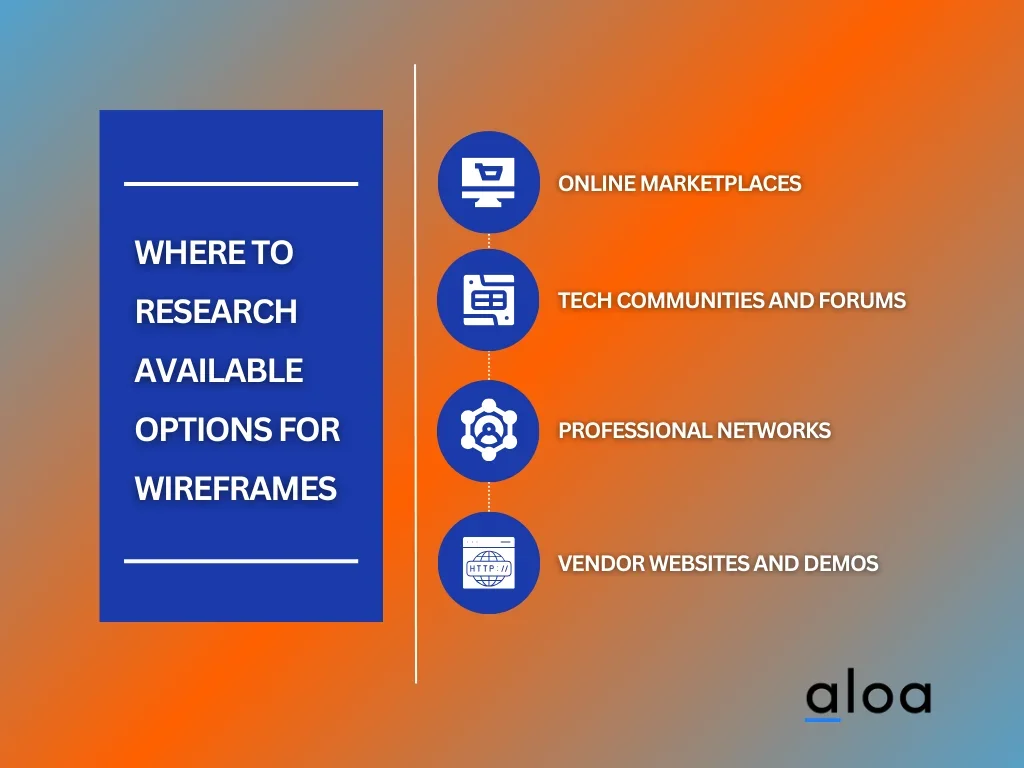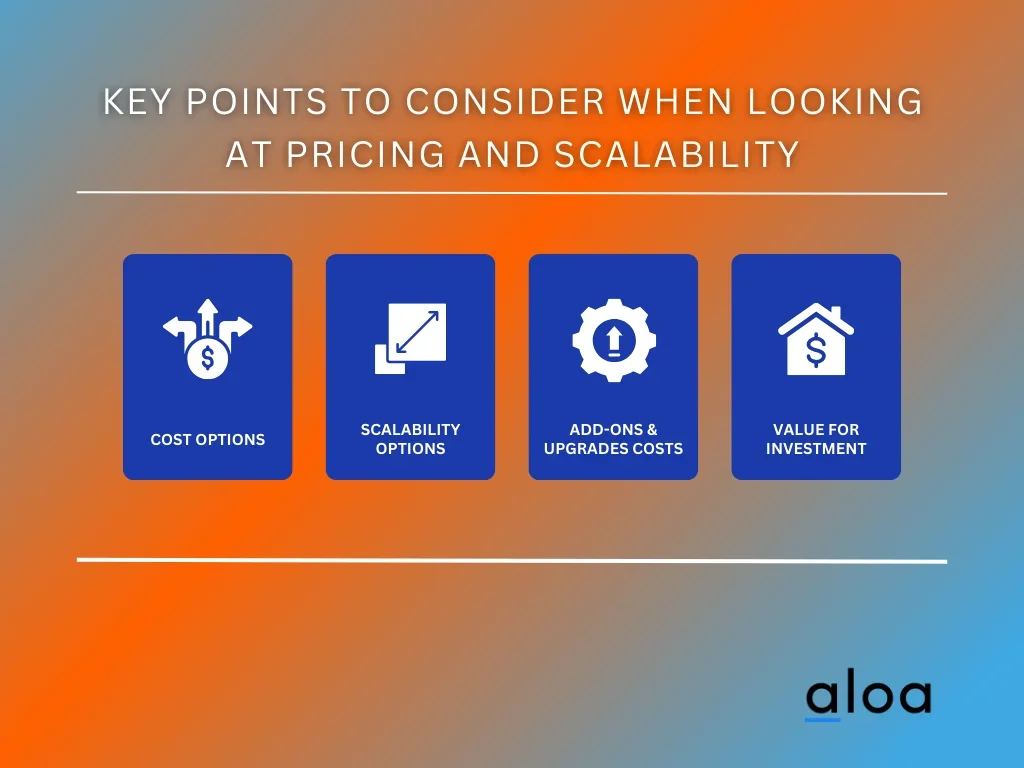In discussions surrounding product and software design, the question of why are wireframes important often arises due to their role as a visual guide for developers. Wireframes bridge conceptualization and implementation, helping developers translate design concepts into functional interfaces for web development.
Aloa, a reputable software outsourcing firm, stands out for its extensive experience developing wireframes. It is a skillset bolstered by a team of expert developers well-versed in crafting intuitive and user-friendly interfaces. Their proficiency in this area ensures client projects benefit from meticulously designed frameworks prioritizing user experience and seamless functionality.
In this blog, we'll explore the question ‘Why are wireframes important?’ in product and software design, shedding light on their role as a foundational tool for effective planning and communication among stakeholders.
By the end of this discussion, you'll gain a deeper understanding of how wireframes contribute to streamlining the design process and ensuring the development of user-centric interfaces.
Let’s get started!
What are Wireframes in Web and Software Design?
Wireframes in web and software design are crucial for your site, serving as skeletal blueprints or visual representations that outline digital interfaces' basic structure and layout. They play a pivotal role in designing responsive sites and site designs by providing a simplified and non-interactive overview of navigation menus, content areas, buttons, and forms.
Beginning with responsive wireframes is essential for ensuring a smooth user experience across different devices and screen sizes, serving as the foundation for understanding how layout needs align with user interactions.
This approach prioritizes functionality and user experience over visual design elements such as colors, typography, or images. This contributes to the development process of a user-friendly interface regardless of whether it's a single-page view or a multi-page layout.
Why are Wireframes Important?
When beginning to design a new digital product or application, the question 'Why are wireframes important?' often arises. Wireframes play a crucial role in visualizing the layout, structure, and functionality of the product, enabling effective communication between stakeholders and guiding the development process efficiently.
Wireframes help identify potential usability issues in the early stage of the website design process, allowing for timely adjustments and improvements. They also facilitate collaboration between designers, developers, and other project stakeholders by providing a precise reference point for discussions and feedback.
Ultimately, wireframes contribute to the overall efficiency and success of the design process by ensuring a shared understanding of the product's functionality, user experience, and the structure of the website, facilitating the development of responsive design solutions.
How To Choose a Wireframe Software Tool
After understanding the answer to the question ‘why are wireframes important,’ selecting the right wireframe software tool is equally crucial for efficient design workflows. Consider these steps that suits your project needs:

Step 1: Define Your Requirements
Start by considering your project requirements, including team size, required features, and collaboration methods. The main goal of this initial assessment is to guide your selection process for a wireframing tool that aligns with your needs and offers the main features essential for your project.
With a wide variety of wireframing tools available, understanding your project's specific requirements is crucial for choosing the most suitable solution. Additionally, consider the communication channels between your team and stakeholders to ensure effective collaboration.
Recognizing wireframes as an important communication tool in clarifying design concepts and facilitating collaboration will guide your selection. By defining your requirements upfront, you'll be better equipped to choose a type of wireframing tool that aligns with your project goals and supports your design objectives.
Step 2: Research Available Options
Researching available wireframe software tools is a great way for designers to gather feedback on features, pricing, and user reviews, ensuring they have as much detail as possible to make informed decisions. By exploring various options, designers can evaluate which tools align best with their specific needs and preferences, ultimately selecting the most suitable solution for their projects.
Here are several avenues worth exploring:

- Online Marketplaces: Websites like Capterra, G2, and TrustRadius are great place options that offer comprehensive listings of wireframe software tools along with user reviews and ratings.
- Tech Communities and Forums: Platforms like Reddit, Stack Overflow, and specialized design forums often feature discussions and recommendations regarding wireframe software tools.
- Professional Networks: Engage with colleagues, mentors, or professionals in your industry, and consider conducting stakeholder interviews to gather insights and recommendations based on their experiences with different wireframe software tools.
- Vendor Websites and Demos: Visit the official websites of wireframe software vendors, such as Adobe XD, to explore extensive toolsets and detailed information about features, pricing plans, and any available demo versions.
Step 3: Evaluate Ease of Use
When choosing a wireframe software tool, it's vital to assess its ease of use. This ensures that designers can efficiently navigate and utilize its features across different screen sizes, including wider screens and mobile devices. Evaluating the software's interface intuitiveness for arranging site elements and mapping out their locations within the web design is crucial for optimal usability.
This addresses the question why are wireframes important and ensures they effectively serve their purpose across various devices. A user-friendly tool streamlines the wireframing process, allowing designers to focus on conceptualizing and refining the layout without struggling with complex software mechanics.
By prioritizing ease of use, designers can seamlessly translate their creative vision into effective wireframes that accurately represent the structure and functionality of the final web design.
Step 4: Assess Collaboration Features
Assessing collaboration features involves conducting a thorough evaluation of the collaborative functionalities provided by wireframe software tools. Doing so is crucial as collaboration features are one of the reasons why are wireframes important. This critical step ensures that designers can seamlessly coordinate efforts, foster effective communication, and facilitate teamwork among all design team members.
Here's how to assess collaboration features:

- Evaluate Real-Time Editing: Look for wireframe software tools that allow multiple team members to edit wireframes simultaneously, facilitating real-time collaboration and eliminating version conflicts during collaborative design sessions.
- Assess Commenting Capabilities: Prioritize tools with robust commenting features, enabling team members to provide feedback directly on wireframes and fostering effective communication and iterative design improvements.
- Consider Version Control: Choose wireframe software tools that offer version control features, allowing designers to track changes, revert to previous versions, and collaborate seamlessly without the risk of losing important design iterations.
- Explore Integrations with Communication Platforms: Look for tools that integrate with popular communication platforms such as Slack or Microsoft Teams, enabling team members to communicate, share updates, and collaborate on wireframes within their preferred communication channels, enhancing workflow efficiency and collaboration.
Step 5: Check Compatibility and Integration
When selecting a wireframe software tool, ensure it aligns with your existing tools and workflow to maintain efficiency, as this integration is an important part of the work. Opt for a tool that seamlessly integrates with your current software stack, allowing for smooth collaboration and workflow continuity.
This consideration is essential because compatibility and integration play a pivotal role in understanding the question why are wireframes important for streamlining the design process. By choosing a compatible tool, you avoid disruptions and maximize productivity throughout the design phase, enhancing the overall effectiveness of wireframing in product and software development.
Prioritizing compatibility ensures that your team can seamlessly transition between tools, maintaining momentum and focus on design objectives. This is integral to why wireframes are important in achieving design success.
Step 6: Consider Pricing and Scalability
Considering pricing and scalability in choosing a wireframe software tool involves evaluating the cost structure and the tool's ability to adapt to changing needs and accommodate growth. Pricing refers to understanding the financial investment required. At the same time, scalability pertains to the tool's capacity to handle increasing demands and project complexities over time.
Here are the key points to consider:

- Initial Cost and Subscription Plans: Assess the upfront costs and subscription plans offered by wireframe software tools to determine the financial feasibility of adoption and ongoing usage.
- Scalability Options: Evaluate whether the tool offers scalable pricing tiers or flexible plans that can accommodate changes in team size, project scope, and evolving design needs.
- Additional Costs for Add-Ons or Upgrades: Consider any additional costs associated with add-on features, upgrades, or premium support services to accurately estimate the total cost of ownership.
- Value for Investment: Analyze the overall value proposition of the tool, considering its pricing and the features, functionalities, and benefits it provides to ensure optimal return on investment.
Step 7: Take Advantage of Trials and Demos
Taking advantage of any free trials or demos wireframe tools offer is an edge saving money. This opportunity allows you to experience firsthand how these tools operate and assess their suitability for your project needs without upfront investment.
Engaging in trials and demos is crucial because it enables you to understand the question why are wireframes important in your specific design process, aiding in selecting the most suitable tool for your team. Through these trials and demos, you gain valuable insights into the significance of wireframes and their role in streamlining the design process.
Ultimately, this hands-on exploration empowers you to make informed decisions, ensuring that the chosen tool aligns with your project requirements and maximizes the benefits of wireframing in product and software design in the long run. Investing time evaluating wireframe software tools will improve outcomes and smoother workflow integration for your projects.
Benefits Of Using Wireframe Software Solutions
In addressing the question why are wireframes important in product and software design,understanding their significance is crucial for appreciating the benefits of utilizing wireframe software solutions. Software developers, in particular, stand to benefit significantly from embracing this software solution, streamlining the design process, enhancing collaboration, and creating interactive prototypes.
Essential overview of these key benefits are as follows:

Efficiency in the Design Process
Efficiency in the design process is the primary focus and starting point when utilizing wireframe software solutions, and this highlights why are wireframes important. With intuitive tools and features, these solutions streamline the design process, allowing for rapid creation and iteration of wireframes.
By providing a clear visual representation of the layout and functionality early in the design phase, wireframe software helps identify potential issues and efficiently refine design concepts. These efficiency and time-saving benefits are among the great benefits of wireframes, enabling designers to focus on creating high-quality user experiences while conserving resources and ensuring the responsiveness of the website's structure.
Enhanced Collaboration
Wireframe software solutions facilitate frequent collaboration among the entire team, including project managers. These tools enable designers, developers, and stakeholders to collaborate seamlessly, overcoming geographical barriers and fostering better communication and understanding throughout the design process.
Through features like real-time editing and commenting, wireframe software enables teams to collaborate effectively, share feedback instantly, and iterate on design concepts efficiently.
Interactive Prototyping
Interactive prototyping is one of the reasons why are wireframes important in design, and wireframe software solutions excel in this area. These tools allow designers to transform static wireframes into dynamic prototypes, giving stakeholders a tangible representation of the final product's functionality.
By incorporating interactive elements such as clickable buttons and navigation, wireframe software enhances the user experience during the testing phase, gathering valuable feedback early in the design process. Compatibility and Integration
Version Control
Version control is another reason why are wireframes important, ensuring smooth collaboration and organization within design teams. With these tools, designers can easily track changes, compare different versions, and revert to previous iterations, enhancing project transparency and efficiency.
This feature streamlines the workflow by preventing confusion over multiple versions of wireframes, ultimately saving time and reducing errors during the design process. Additionally, wireframe software solutions promote seamless version control by providing a centralized platform for managing and updating wireframes, leading to more effective collaboration and higher-quality design outcomes.
Accessibility
Accessibility is a significant advantage of utilizing wireframe software solutions in design. These tools enable designers to create wireframes that adhere to accessibility standards, ensuring inclusivity for all users. By offering features such as keyboard navigation and screen reader compatibility, wireframe software facilitates the development of user interfaces accessible to individuals with disabilities.
This focus on accessibility improves the overall user experience. It helps businesses comply with legal requirements and demonstrate a commitment to inclusivity. In essence, wireframe software solutions empower designers to prioritize accessibility from the initial stages of the design process, leading to more inclusive and user-friendly products.
Key Takeaway
Delving into the topic of why are wireframes important emphasizes their contribution to ensuring consistency and coherence across various product or software interface aspects. By understanding the significance of wireframes, designers can streamline the design process, enhance collaboration, and create interactive prototypes more effectively.
Ultimately, embracing the importance of wireframes enables teams to deliver user-centric and visually appealing products that meet the needs of both stakeholders and end-users, fostering a more fluid creative process.
Ready to elevate your projects with stunning wireframe designs? Check out our design blogs for deeper insights and trends! Take the next step towards unlocking your creative potential by visiting the Aloa hire page to explore more collaboration opportunities in 2024!

